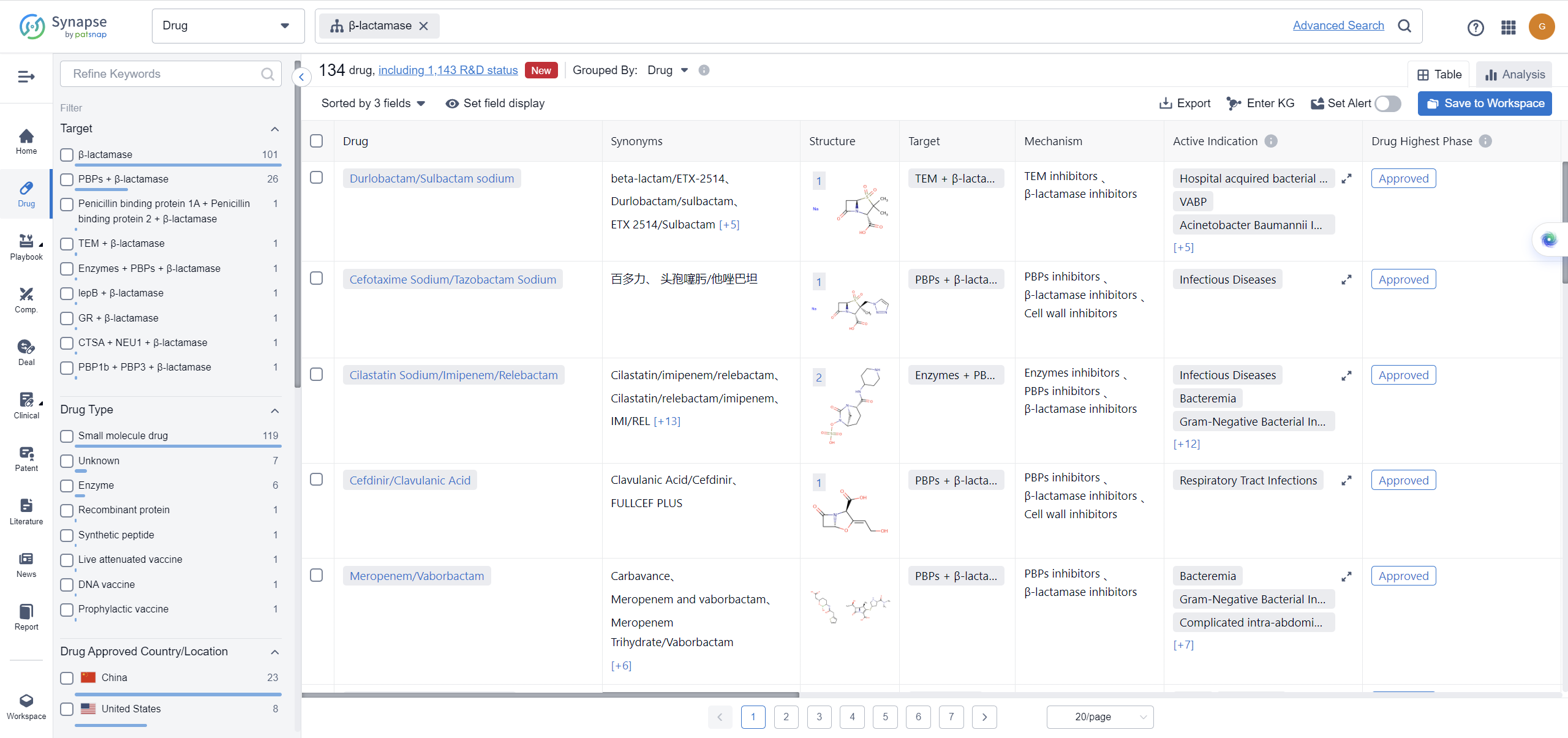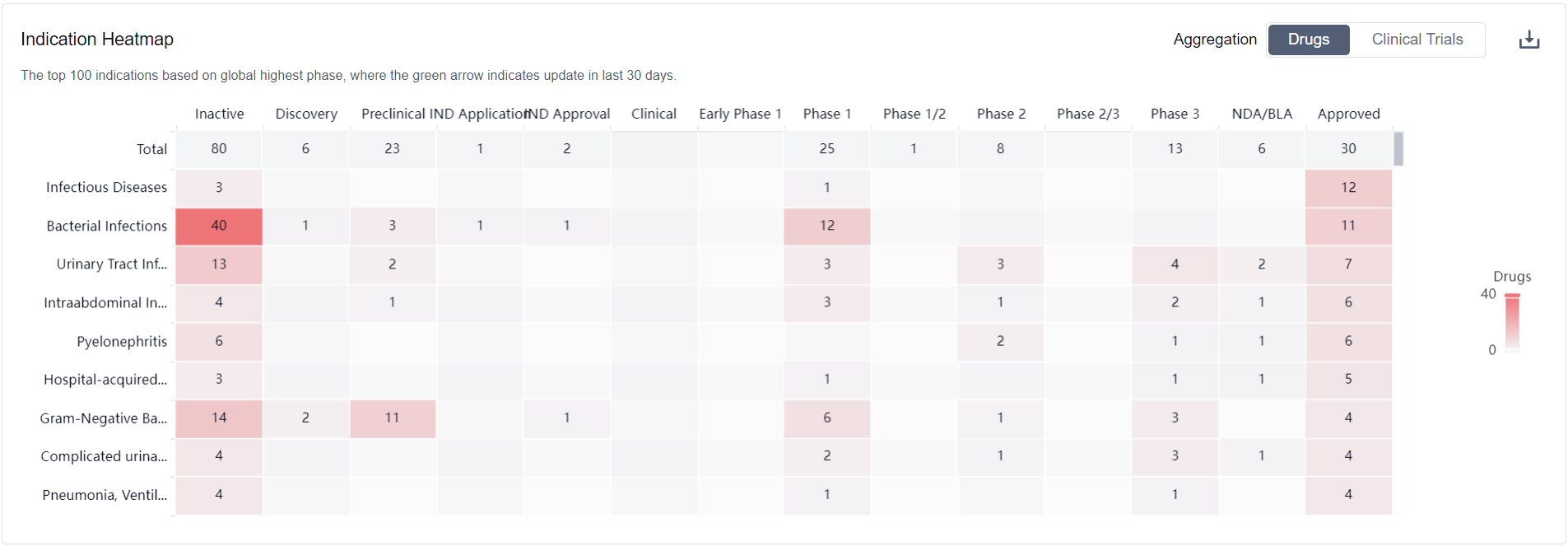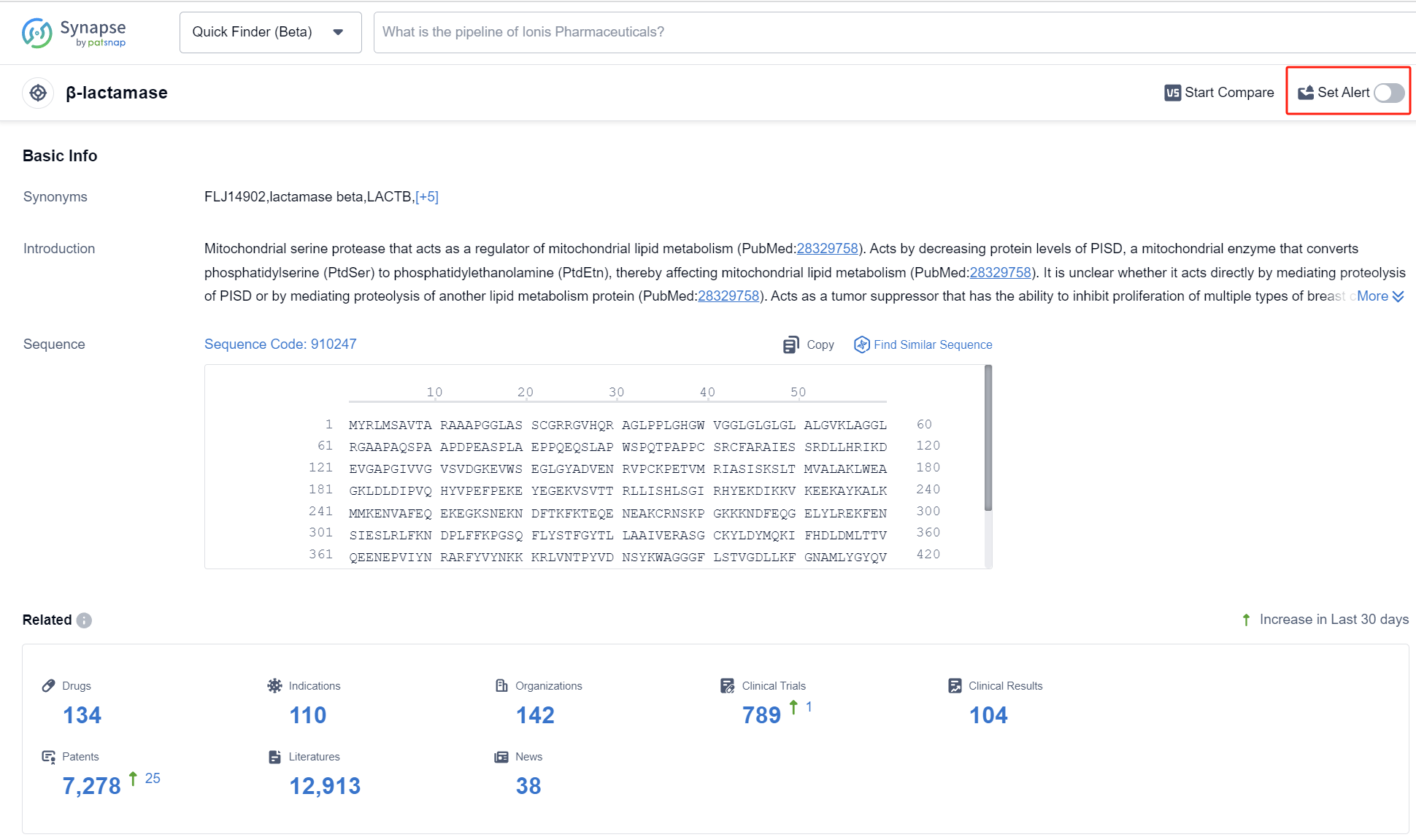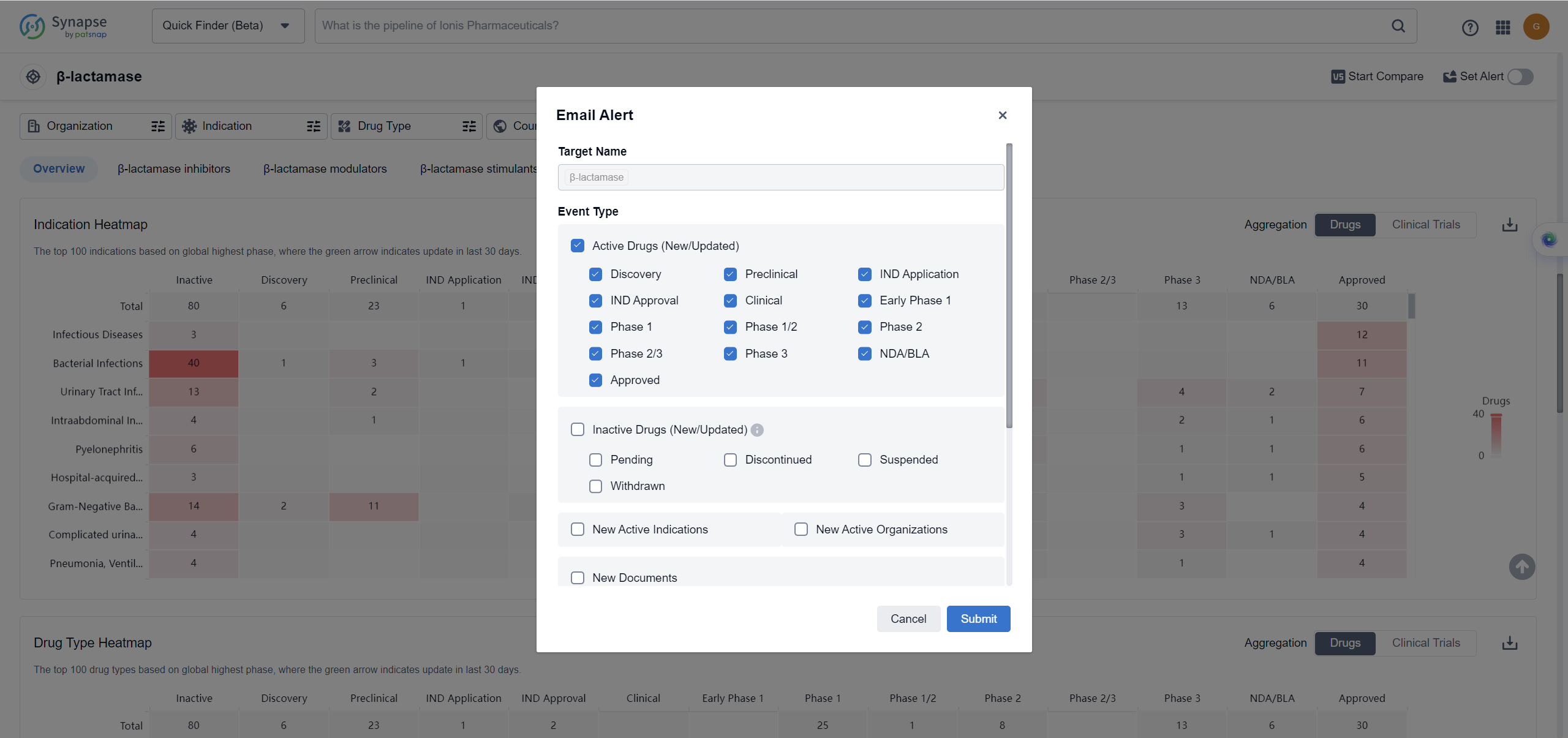What are β-lactamase inhibitor and how do you quickly get the latest development progress?
β-lactamase inhibitors are a new type of β-lactam drugs, with the main ones currently in clinical use being clavulanic acid, sulbactam, and tazobactam. These three compounds have a weak antibacterial activity, or no antibacterial activity at all. However, they can inhibit the activity of β-lactamase, protecting β-lactam antibiotics from being hydrolyzed, or at least reducing this hydrolysis. This leads to a significant decrease in the minimum inhibitory concentration (MIC) of penicillins and cephalosporins, potentially enhancing the potency of these drugs several times or even by dozens. When combined with aminopenicillins, these inhibitors can restore the sensitivity to medication in various enzymatic bacterial strains such as staphylococci, streptococci, neisseria, haemophilus, coliform bacteria, klebsiella, legionella, and several pseudomonas strains among others. When used in combination with antipseudomonal penicillins like piperacillin and meropenem, bacterial strains like maltophilic pseudomonas, leuconostoc, acinetobacter, listeria, salmonella, and others can regain sensitivity. It is important to note that these inhibitors are ineffective against methicillin-resistant Staphylococcus aureus (MRSA) infections.
β-lactamase inhibitors can be divided into irreversible and reversible classes. Irreversible inhibitors include clavulanic acid, sulbactam, and tazobactam. These contain a β-lactam ring structure and work by forming a non-covalent bond complex with β-lactamase (this binding is strong and difficult to reverse), causing the enzyme to deactivate and degrade its own structure, hence they are also called suicide enzyme inhibitors or irreversible competitive enzyme inhibitors. They can inhibit most class A β-lactamases except for carbapenemases, but have no inhibitory abilities for the majority of class B, C, and D enzymes.
Reversible inhibitors include avibactam, relebactam, and vaborbactam, which do not contain a β-lactam ring structure. They reversibly bind with the active part of the bacteria's β-lactamase, their structure not being degraded in the process, thus having a long-term inhibitory effect. Avibactam and relebactam belong to the diazabicyclooctanes (DABCOs) structure, being resistant to hydrolysis, demonstrating broader-spectrum β-lactamase inhibitory effects and a reversible inhibition, capable of inhibiting Class A and C β-lactamases including carbapenemases. Avibactam can also inhibit OXA-48 in class D enzymes, but relebactam is unable to inhibit OXA-48. Vaborbactam is a boronic acid derivative, a new generation of enzyme inhibitors, which can inhibit class A and C β-lactamases including carbapenemases, but has no inhibitory effect on the class D carbapenemases including OXA-48.
How do they work?
A β-lactamase inhibitor is a type of drug that is used in combination with certain antibiotics to enhance their effectiveness against bacteria. β-lactamase is an enzyme produced by some bacteria that can break down β-lactam antibiotics, such as penicillins and cephalosporins, rendering them ineffective.
When a β-lactamase inhibitor is combined with a β-lactam antibiotic, it can inhibit the activity of the β-lactamase enzyme, allowing the antibiotic to remain active and kill the bacteria. This combination therapy is particularly useful in treating infections caused by bacteria that produce β-lactamase, as it helps to overcome antibiotic resistance.
By inhibiting the action of β-lactamase, the β-lactamase inhibitor helps to extend the spectrum of activity of the antibiotic, making it effective against a broader range of bacteria. This combination therapy is commonly used in the treatment of various bacterial infections, including respiratory tract infections, urinary tract infections, and skin infections.
Overall, a β-lactamase inhibitor is a valuable tool in combating antibiotic resistance and improving the efficacy of β-lactam antibiotics by preventing the breakdown of these drugs by β-lactamase enzymes produced by bacteria.
List of β-lactamase Inhibitors
The currently marketed β-lactamase inhibitors include:
- Durlobactam/Sulbactam sodium
- Cefotaxime Sodium/Tazobactam Sodium
- Cilastatin Sodium/Imipenem/Relebactam
- Cefdinir/Clavulanic Acid
- Meropenem/Vaborbactam
- Avibactam Sodium/Ceftazidime
- Ceftolozane Sulfate/Tazobactam Sodium
- Ceftriaxone Sodium/Sulbactam sodium
- Ceftriaxone Sodium/Tazobactam Sodium
- Piperacillin Sodium/Sulbactam sodium
For more information, please click on the image below.
 What are β-lactamase inhibitors used for?
What are β-lactamase inhibitors used for?
β-lactamase inhibitors is commonly used in the treatment of various bacterial infections, including respiratory tract infections, urinary tract infections, and skin infections. For more information, please click on the image below to log in and search.
 How to obtain the latest development progress of β-lactamase inhibitors?
How to obtain the latest development progress of β-lactamase inhibitors?
In the Synapse database, you can keep abreast of the latest research and development advances of β-lactamase inhibitors anywhere and anytime, daily or weekly, through the "Set Alert" function. Click on the image below to embark on a brand new journey of drug discovery!






